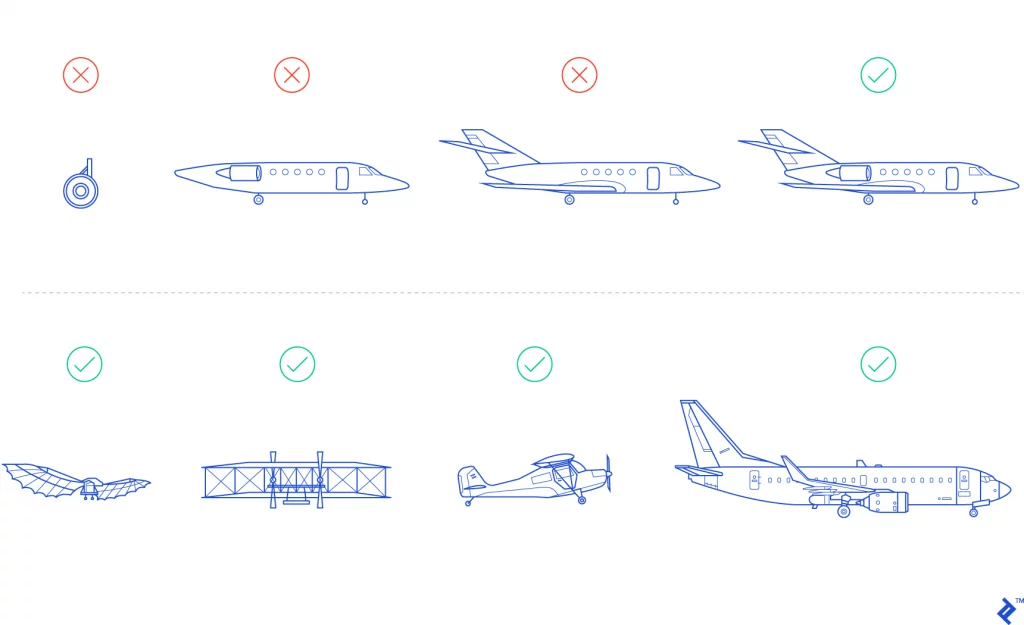Recently I’ve been submerged into the world of both Positive COVID cases and home learning. I know this common situation will fill many with dread (as it did me). However, while figuring out how not to become ill (with the rest of my family), ensure my family didn’t starve (meal prep), do all the housework – ultimately balance home and work.
Remembering work is really challenging as it involves balancing the development of multiple features, across different time zones, all while continuing to be a professional and not letting my work team down. With all these plates spinning, it made me think… Why should I try to balance all of this?
Using my 15+ years of product and business analysis experience, including managing many tricky stakeholders, consistently delivering value in lots of different industries, I’ve created and continue to evolve a ‘playbook’ of how to problem solve and balance the demands in different environments. This made me think, surely there’s a minimum I can do that keeps my daughters learning, family fed, and doesn’t leave the house in chaos, while still delivering high value to my clients and team in line with expected timelines.
The more I thought about this, parenting, learning with children and defining an MVP with a client have more in common than we think. My daughter’s learning and development is my mission (like every parent) and having a key goal e.g. like ‘nailing the 7 times table’ is like having a key driver for helping define a successful MVP.

MVP… more than an NBA term?
You will of heard the most common;
- Minimal Viable Product –
- The most basic version of a product that can help you validate assumptions, further understand who your customers are and the problems you are solving for them.
- Minimum Valuable Product
- If the first definition is v1.0 then this is v2.0
- The key is in the VALUE and hence focussing on how can we deliver the minimum value to our customers, still solve their BIGGEST problems and not compromise on the customer experience while doing so.
But the ‘Most Valuable Path’ v3.0, has become my favourite definition. While focusing on the value to the end customer, it also articulates there are choices along the way and the right combination of choice will help you strike the right balance of value, customer experience and learning.
But what do they have in common? Well
- They highlight time and resources are not infinite, so focus and prioritisation is key to use these resources (and any others) efficiently.
- They are ‘a stake in the ground’, that allows a team to strive for a constant goal – this is further facilitated by metrics and OKRs (Objective Key Results). Without a goal you are, as Mike Cohn says, “climbing from false peak to false peak”.
Value… Not just about the money
This is, as they say in the eye of the beholder and depends on the context.
When looking at my daughters and Learning development, value is ensuring my daughters are actually learning, increased knowledge, knowing something they didn’t know before. This is the minimum we as parents (because we’re a partnership/team) need to achieve. We can also build on the knowledge and learning we achieve each day, in each lesson to achieve the mission
However, when considering value from a client point of view, the focus is helping them solve the problems their customers have. Understanding what the value proposition is, can be a challenge and so focussing on the market differentiating factor will help a client articulate what value means for them and to their customers. It’s also really important to ensure value is aligned with the client’s mission as they navigate the path ahead. We must not forget, that this will be done with a focus on making and/or saving money … They are a business after all.

The real world… “Strive for perfection… But Don’t wait for it” (Source: Me)
Many clients want to ‘boil the ocean’ and as the Queen song says, ‘They want it all and they want it now’. A valued colleague reminds me… “Anything is possible, just not everything” and allowing/encouraging clients to buy into this is key. It allows them to be customer centric, but also reminds them of their constraints e.g. time, budget and quality.
However, the value is not always achieved. While working with an online casino operator (prior to joining S&S), who wanted to generate Affiliate revenue, the scope was soo big, the customer journey was soo complex, that we weren’t able to successfully get past the requirements phase. We didn’t get any affiliate revenue and the internal cost was never realised. This has remained a constant reminder to, start small, stay focussed and build in the ability to “learn about the business viability of the product” (Agile Alliance).
The focus should be on wanting the most valuable feature or change. When I previously worked fon a pilot for a Fast food chain client, we kept the scope small, some processes were manual and we only built essential changes into the platform in order to validate these questions;
- Is this viable – reward vs effort invested.
- Is this scalable – more instances and hence orders.
- Learn from the pilot – positive and negative aspects.
- Determine… What next.
The change was a mix of process and tech, but the same principles were applied.

Another client in the travel industry wanted to achieve an industry first – the same approach was applied. It involved more software systems changes as well as integration with third party systems. With all of these touch points, we needed to ensure the change was absolutely essential. By applying this ruthlessness, it meant we could iterate on the product and as previously mentioned, scale the product. Remember, this can only be done by starting small.
The ‘take away’ (fast food pun intended) from these examples is…
By focusing on value you’ll see there are common traits for both home learning and defining the MVP;
- Emphasis on learning – you are building a product incrementally and hence learning in the same way.
- Prioritisation – this is key to ensure which change/feature will deliver the most value to the customer and help a child learn.
- Identify strengths and weaknesses – knowing what these are for a child/client, will facilitate progress e.g. a client’s product USP (unique selling point) or child who is great at maths.
- Plan – Otherwise you’ll wheel spin and achieve nothing in the short time, when you have the attention of your child or client (sorry client). Using a small time frame can really help with the focus e.g. a 90 day cycle.

Conclusion
Navigating learning with children and defining an MVP with a client has more in common than we think. For example, provide a high quality ‘service’ to both clients and children to keep them happy and focussed to achieve the mutual goal. Remember, both need guidance in order to achieve their full potential.
Anything is possible, just not everything. Time and resources are not infinite, hence prioritise and establish the link between value and importance (and IF it should be included in your MVP). To do this, remain laser focussed on value in order to deliver your MVP, in order to enable learning through iteration of your MVP.
Draw on the experience you have, to influence your client and lessons learned… Failure could result in wasted investment and a missed opportunity.
Defining an MVP is not a one time activity. Flexibility and replanning is required as you learn more. A 90 day roadmap can help, by looking at a small time frame you will better visualise and determine what can be done, but this must be underpinned with a mission statement.






































































